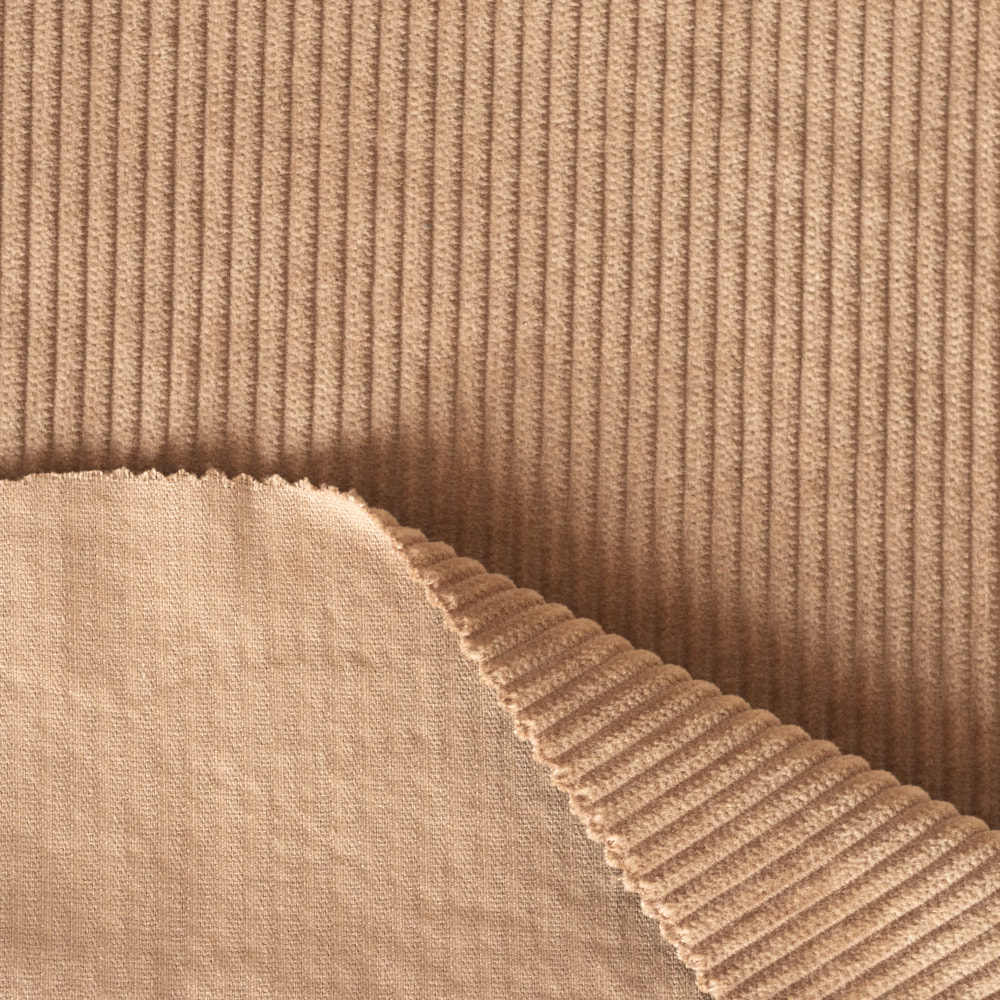Textile Industry Zone, East Hutang Town, Wujin District,213100 Changzhou,China
In the production process of cotton piece-dyed corduroy fabric, ensuring dyeing uniformity is one of the key technical difficulties. Uneven dyeing can cause color difference, streaks or other quality problems in the finished fabric, affecting the appearance and market competitiveness of the product. The following is a detailed analysis of how to ensure dyeing uniformity from each link of the production process:
1. Raw material selection and pretreatment
(1) Cotton fiber quality control
High-quality raw materials: Select high-quality cotton with uniform fiber length and less impurities to reduce color difference caused by raw material differences during dyeing.
Cotton blending process: Through scientific cotton blending technology (such as opening and blending), ensure that cotton fibers from different batches are evenly distributed.
(2) Fabric pretreatment
Desizing: Remove the sizing added during the weaving process to avoid sizing residue affecting dye penetration.
Method: Use enzyme desizing or alkali desizing to ensure the cleanliness of the fabric surface.
Scouring: Remove natural impurities (such as wax and pectin) to improve the fiber's hygroscopicity and dye adsorption capacity.
Method: Use high-temperature scouring process and add appropriate amount of auxiliary agents (such as scouring agent).
Bleaching: Remove natural pigments and provide a consistent base color for subsequent dyeing.
Method: Use oxygen bleaching or chlorine bleaching process, and strictly control bleaching time and temperature.
2. Dyeing process optimization
(1) Dye selection
Suitable dyes for corduroy: Select reactive dyes or direct dyes with high affinity for cotton fibers and strong permeability.
Dye formula: Mix the dye ratio according to the target color to ensure stable dye concentration.
(2) Dyeing equipment
Continuous roller dyeing machine: Suitable for corduroy fabrics produced in large quantities, which can achieve uniform dyeing.
Advantages: The dye solution is applied to the fabric surface through a uniform roller to reduce color difference.
Overflow dyeing machine: Suitable for small-scale production or corduroy with special textures.
Advantages: The fabric flows freely in the dye solution to avoid creases and indentations.
(3) Dyeing parameter control
Temperature control: Maintain a constant temperature during the dyeing process to avoid uneven dye adsorption due to temperature difference.
Method: Use an automatic temperature control system to monitor the temperature of the dye solution in real time.
Time control: The dyeing time should be precisely set according to the type of dye and the thickness of the fabric.

pH adjustment: The pH of the dye solution has an important influence on the dye uptake rate.
Method: Use a buffer solution to stabilize the pH value of the dye solution.
(4) Uniform dyeing
Multi-stage dyeing: Use multiple dyeing processes to gradually increase the dye penetration depth.
Uniform rolling: Adjust the dye penetration through the roller pressure to ensure uniform distribution of the dye solution.
3. Finishing process
(1) Fixing treatment
Application of fixing agent: Use a high-efficiency fixing agent after dyeing to improve the adhesion and color fastness of the dye.
Method: Immerse the fabric in the fixing agent solution and then dry it.
Heat treatment: Through high-temperature setting (such as steam or hot air oven), the dye molecules are further fixed.
(2) Surface finishing
Brushing and shearing: The unique fluff effect of corduroy needs to be formed through brushing and shearing processes. This process needs to ensure that the height of the pile is consistent to avoid visual color difference caused by uneven pile.
Singeing treatment: Use flame to burn off excess pile on the surface to improve the surface finish of the fabric.
(3) Anti-wrinkle and softening treatment
Anti-wrinkle finishing: Use resin finishing agent to enhance the wrinkle resistance of the fabric.
Softening treatment: Add softener to improve the feel while avoiding color changes caused by chemical treatment.
Through scientific design and strict process control, the dyeing uniformity of cotton piece-dyed corduroy can be significantly improved, thereby meeting the demand for high-quality fabrics in the high-end market.












